Feeding birds in winter — top tips and what to avoid
If you're a keen bird watcher, here's what you can and can't feed the birds in winter
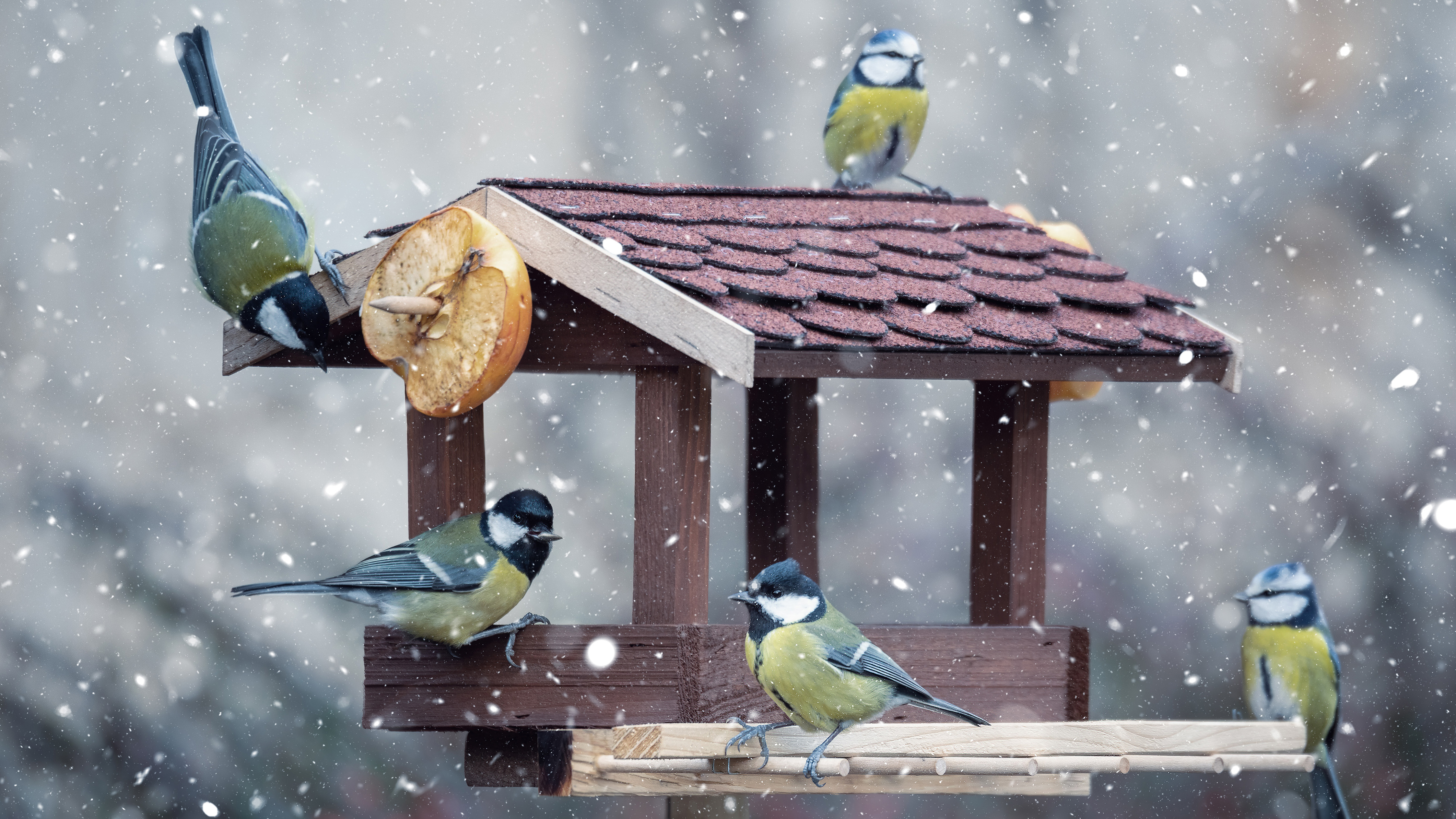
If your garden or outdoor space attracts beautiful species, you'll need to know how to feed birds in winter. Particularly, during the cold months, this is the time our feathered friends will rely more on our feeders for survival, as food becomes scarce.
While feeding birds in winter can seem pretty easy, there are some important things to be aware of. Understanding the foods that will benefit their health and well-being during winter will make all the difference.
What’s more, feeding birds the wrong type of foods can be dangerous to their health, and in worse cases, fatal. That’s why it's so important to know which foods are safe to offer your feathered friends, and will encourage them back for more.
We’ve done the research for you with our useful guide on the dos and don’ts when feeding your backyard birds in the winter.
Plus, be sure to check out these ways to attract hummingbirds in your yard too.
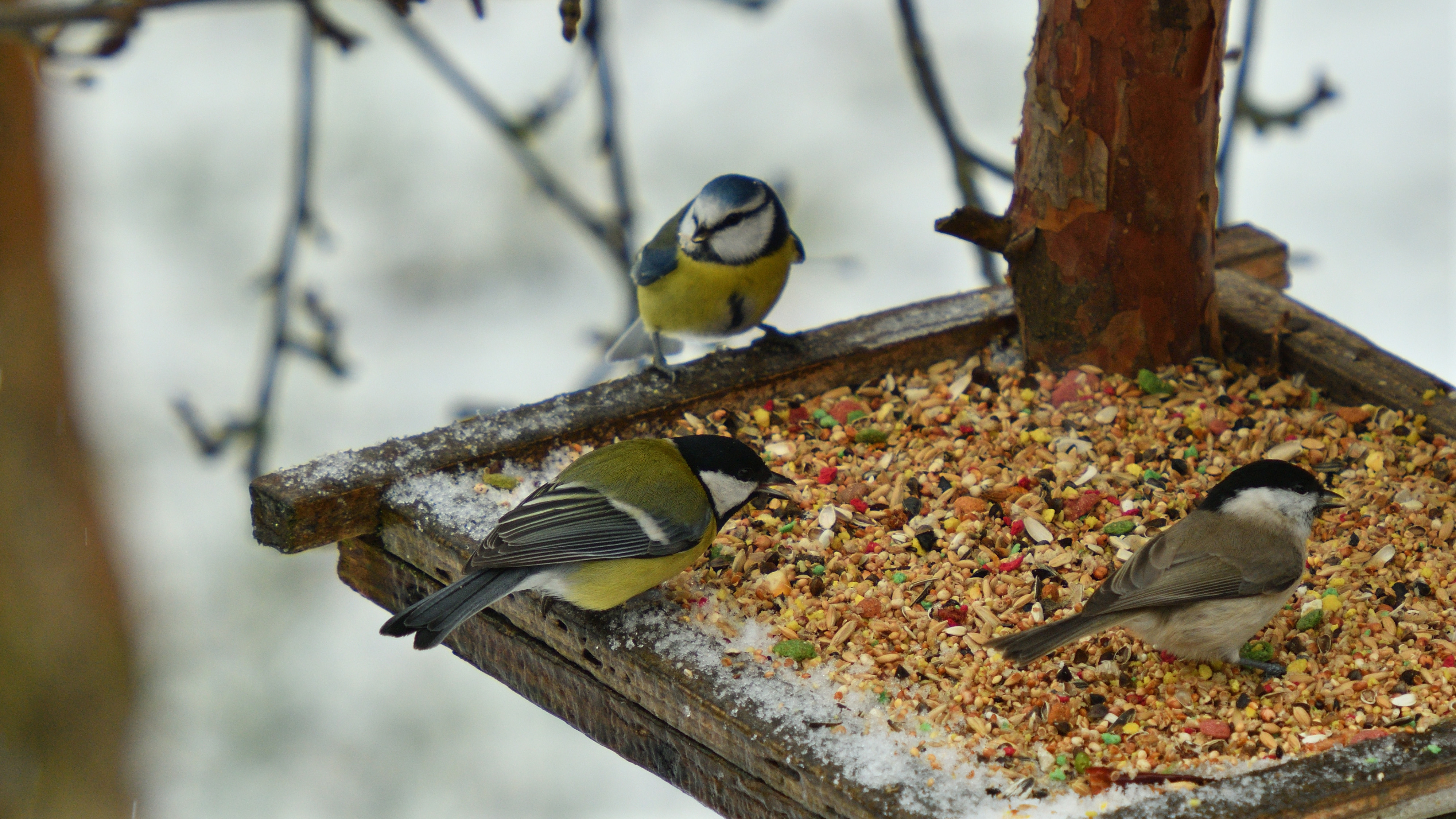
What types of birds visit your garden during winter?
It’s always useful to know what species of bird visits your garden. This will help you decide what types of food is preferable to put inside your feeder. Typically, goldfinches, sparrows, titmice, jays, woodpeckers, chickadees, and cardinals are popular winter birds. However, this will depend on your location and climate.
The best things to feed birds for winter
- Nuts, lard and suet — These are high fat foods and are ideal for providing energy to birds in the winter.
- Mixed seeds — These are a great combination to start feeding birds in winter. However, avoid mixes with oats and milo, as birds don’t eat these.
- Black sunflower seeds — These are a popular choice and are loved by plenty of species including House finches, Northern Cardinals, and jays, among others.
- Mealworms — Live or dry mealworms are another favorite with birds and are highly nutritious. Woodpeckers, cardinals and the American Robin in particular, love these.
- Fruits — Chopped up pieces of apples and pears are also great options to put in a feeder.
- Peanut butter — This is also a high caloric food that birds can get energy from. You can either spread it on a pinecone or buy specific peanut butter feeders. Just make sure it’s unsalted as salt can be harmful to birds.
- Cracked corn — This is often found in bird seed mixes and is highly nutritious.
- Nyjer seeds — Goldfinches in particular love these small black seeds that are rich in oil.
Things you should never feed birds for winter
- Bread — While it’s tempting to feed scraps, bread has no nutritional value for birds and will only fill up their stomachs. This will prevent them from eating sufficient seeds and grains with more nutritional benefits.
- Chocolate — This is toxic to birds and should never be fed to them.
- Meat — Never add raw meat to the feeder as this can attract unwanted guests like rodents, cats or foxes. Plus, meat will spoil very quickly and can be fatal to birds.
- Salt — Too much salt content is toxic for birds and can affect their nervous system. This includes salted nuts or other heavily-salted foodstuffs.
- Scraps of household food — These won’t be appealing to birds and will only attract rodents or foxes to the feeder. Plus, any food cooked in oil or garlic will be harmful to birds.
- Milk — This can upset birds' stomachs, causing sickness, diarrhea and dehydration. Since birds require more water during winter, this can be harmful.
- Out-of-date or spoiled bird food — Bird food should always be fresh and used before the expiration date.
Can I feed birds eggshells in winter?
This may sound strange, but eggshells offer a high source of calcium, so they're incredibly healthy for birds. In particular, female birds who need calcium more to create shells for their eggs.
Sign up to get the BEST of Tom's Guide direct to your inbox.
Get instant access to breaking news, the hottest reviews, great deals and helpful tips.
Simply clean your eggshells thoroughly and bake them in the oven at 450ºF for 10 minutes. Let them cool down before crushing them to add to your bird table or feeder.
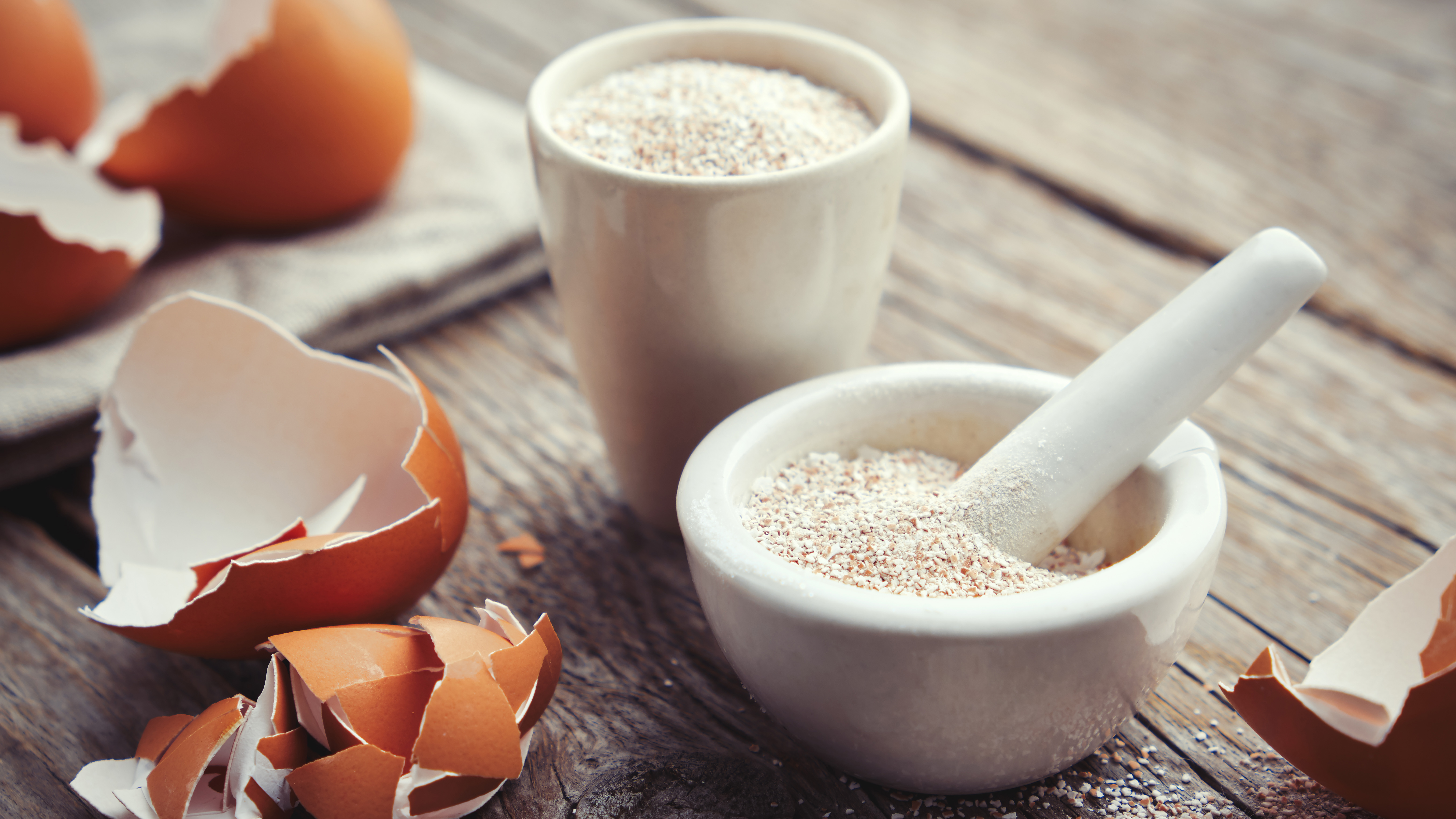
Put out a bird bath
Along with the best bird food for their feeders, water is just as important to their well-being. You can provide fresh water in a bird bath to keep them hydrated and reserve energy. However, if temperatures drop to freezing, it may be worthwhile considering a heated bird bath to prevent icy or frozen water.
Always remember to clean your bird bath regularly to remove any leaves or dirt deposits that cause bacteria. The same applies to bird feeders and the feeding area, to keep up the overall hygiene. Also, unswept bird seed will only attract rodents or foxes to visit the area, which will disturb the birds.
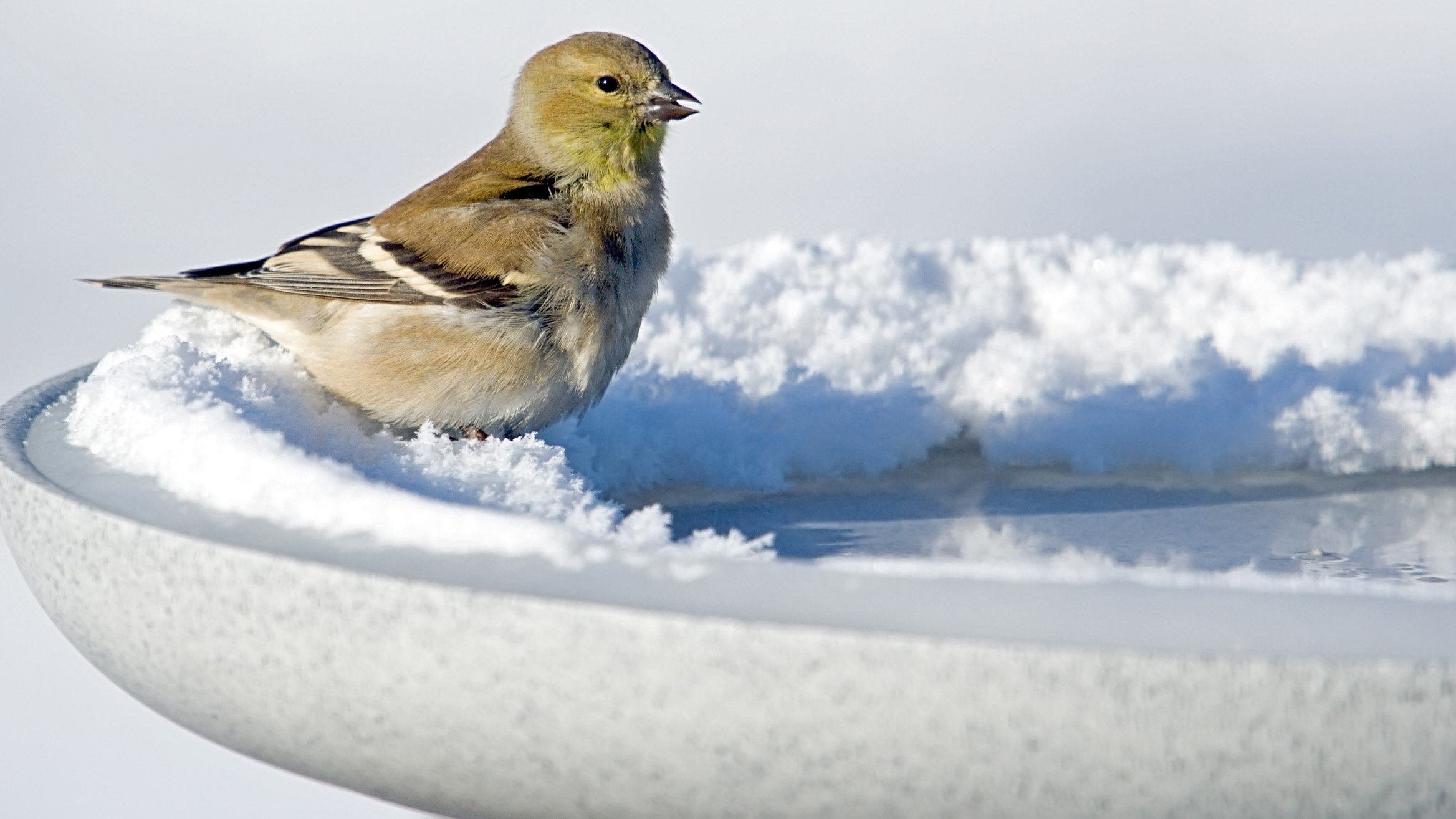
How can I feed birds in the winter?
Bird tables are a great option, but you can also use bird feeders which can hang from a pole, tree, or can be wall-mounted. Just ensure your feeders are located in an open space and are high enough to keep them safe from predators.
How can I make my own bird feeders for winter?
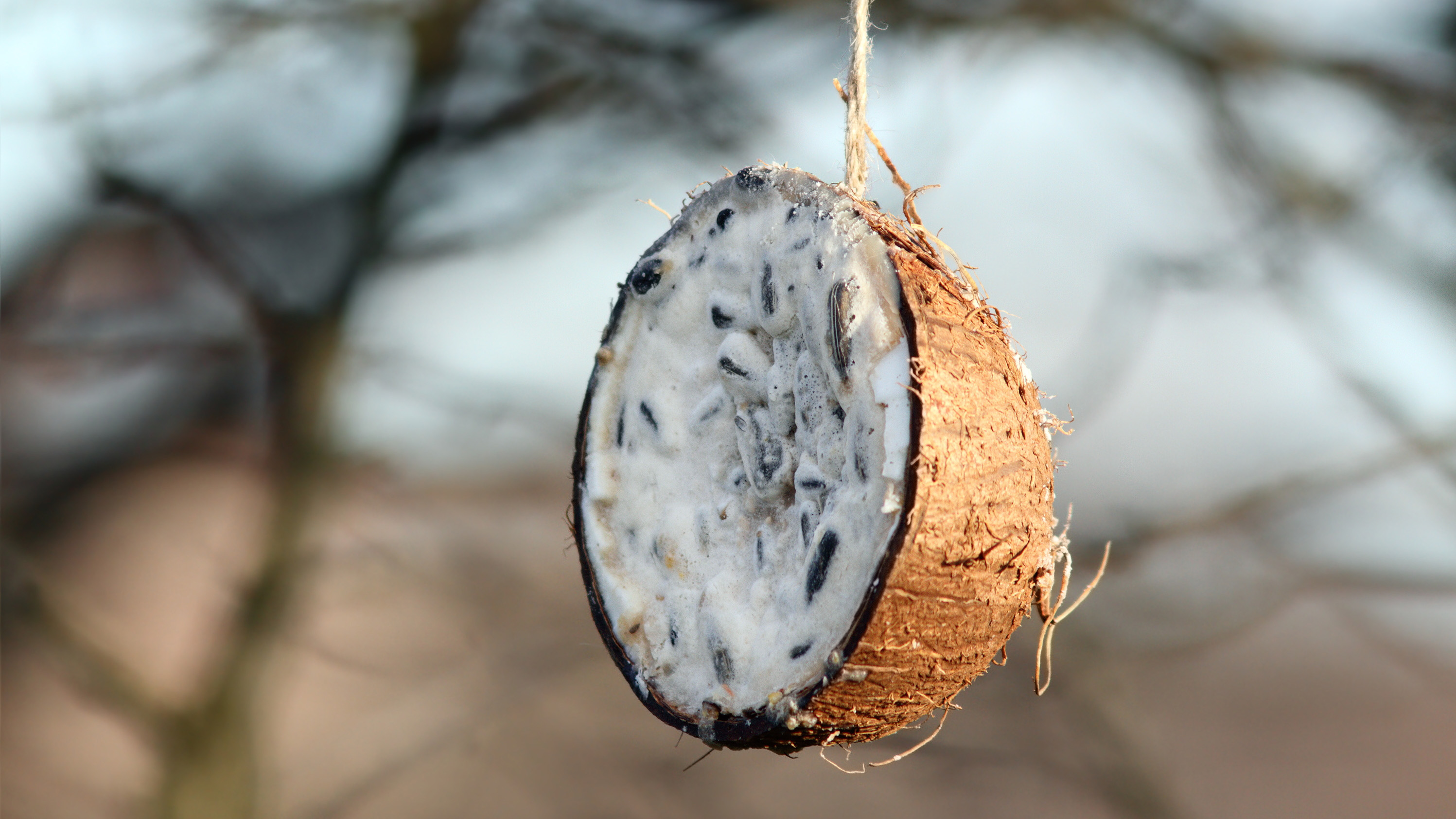
Why spend a fortune on bird feeders when you can make your own? Here are two quick and easy bird feeders you can make yourself.
Coconut shell feeders
Coconut shell feeders can be made from suet and seed, which are rich in protein. Simply drill a hole in the coconut shell and insert a tie string to create a loop.
Next up, melt one cup of lard or suet in a saucepan and mix two cups of bird seed into it. Once all packed into a shell, leave to set for an hour. Hang on a tree when ready, and you have your homemade bird feeder!
Pine cone feeders
Another option takes advantage of all the pinecones that might be littering your yard. Simply take the dried pinecone and fill its cracks and crevices with lard, suet, or peanut butter. Then, roll the pinecone in a mixture of birdseed. Attach a string to the pinecone, and hang it from a tree or branch.

As the Homes Content Editor, Cynthia Lawrence covers all things homes, interior decorating, and garden-related. She has a wealth of editorial experience testing the latest, ‘must-have’ home appliances, writing buying guides and the handy ‘how to’ features.
Her work has been published in various titles including, T3, Top Ten Reviews, Ideal Home, Real Homes, Livingetc. and House Beautiful, amongst many.
With a rather unhealthy obsession for all things homes and interiors, she also has an interior design blog for style inspiration and savvy storage solutions (get rid of that clutter!). When she’s not testing cool products, she’ll be searching online for more decor ideas to spruce up her family home or looking for a great bargain!
